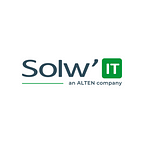How IoT Can Revolutionize Your Products?
Smart devices seem to be everywhere now. Also, the IoT industry is constantly getting more and more popular, and many manufacturers worldwide decide to create their own smart products. But what is the Internet of Things, and, most importantly, what features should a product have to become a “smart device”? Read this article to find the answers to the above questions.
What does the acronym IoT stand for?
IoT (Internet of Things) is a broad term. It is used to refer to a network of smart devices connected to the internet. Those smart devices can be smart speakers, washing machines, TVs, phones, security systems, thermostats, and many more. We are able to turn our homes into smart homes managed by smartphones, tablets, or voice assistants by connecting our smart devices to a network. Additionally, smart homeowners can create custom settings that determine when specific devices are turned on or off and control them from any place.
Trends in IoT do not only refer to household devices. They cover many more products, such as smart clothing and footwear for active people or smart vehicles (such as autonomous cars), and many others.
What is important to remember, IoT platforms (e.g. Google’s Cloud IoT Core) that connect, monitor, and control resources that belong to the Internet of Things are needed to manage smart products.
When can we call a device ‘smart’?
Nowadays, we hear the term “smart” way too often than we should. It often refers to any innovative products. We already have “smart toothbrushes” or even “smart playdough” on the market. But are those products really smart? How can we tell if a given product is smart or just “ordinary”?
Let’s first review the definition from the publication: “What is a smart device? — a conceptualisation within the paradigm of the internet of things”:
“A smart device is a context-aware electronic device capable of performing autonomous computation and connecting with other devices either wired or wirelessly to exchange data.”
This definition of a smart product indicates three key features such as:
- context awareness,
- autonomous data processing,
- connectivity.
That suits the main idea of IoT, which is that almost anything can be part of IoT. Even the simplest object can become a smart one if we equip it with a sensor, computing capabilities, and network connectivity. A project realized for one of our clients, a manufacturer of heaters, is one of the examples of how we can turn a regular device into a smart one.
The benefits of smart products
Smart products can significantly improve the safety and comfort of our lives. For instance, if we are able to control both heating and lighting with a single device, then this significantly helps in time reduction, but also, among other things, helps to save electricity.
An important feature of this type of solution is context-awareness. In other words, it means that smart appliances have the ability to dynamically adapt to changing conditions. They can also take actions based on the context of an ongoing situation and can configure themselves accordingly. Moreover, they can communicate and exchange data with other devices to take optimal action.
Smart devices’ intelligence is their ability to react in real-time. That is exactly how intelligent cars or houses work. The system automatically takes several actions at the same time depending on the change in the condition of the road or the room. Let’s take a burglary as an example. In such a situation, when the installed motion sensors detect a specific action, they will turn on the lights, activate the alarm, and even send a notification to the homeowner.
What lies ahead for IoT technology
The number of Internet of Things (IoT) connected devices worldwide will reach 38.6 billion by 2025 (Statista). Additionally, forecasts show that by 2030 around 50 billion of these devices will be in use worldwide. That means that in a few years we will have a massive network of connected devices — from smartphones to kitchen appliances.
That means that the smart product market will significantly affect the development of the global economy. As McKinsey predicts, the IoT market will be worth between $4 and $11 trillion by 2025. Businesses can add value by reducing operating costs and creating new revenue streams by delivering advanced solutions. Both individual consumers and other business partners will benefit from that.
Turning ordinary products into smart ones
In today’s world, if you want to keep up with market trends and be able to answer the constantly growing customer needs, you may have to transform your ordinary product into a smart device. Solwit is a company that helps customers in the transition to IoT products by providing them with advanced components and controls. We also deliver a system integrated with dedicated software. It allows our clients to control their smart products remotely and, what’s important from the business perspective, obtain valuable data to create complex analytics.
The text originally appeared on Solwit blog.
Written by Solwit Team
